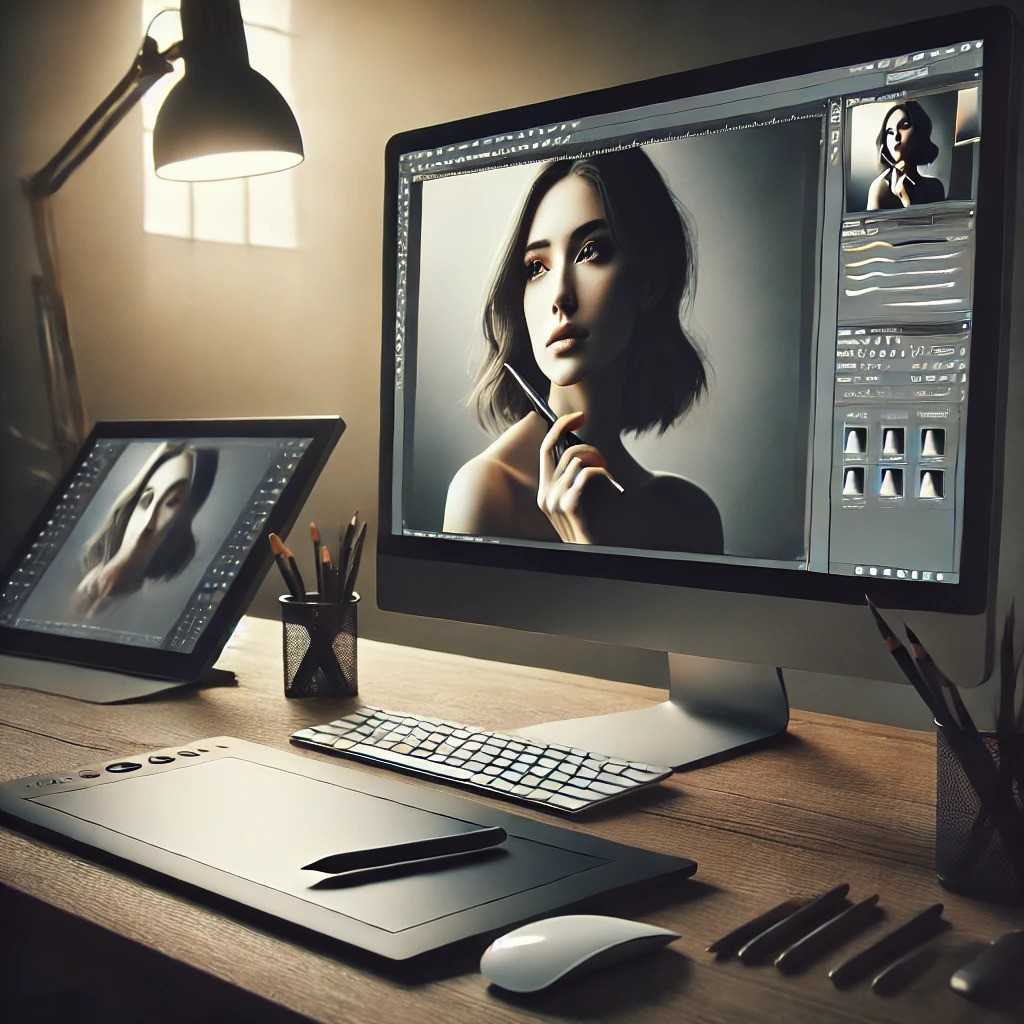Photo retouching has evolved significantly over the years, moving from manual touch-ups in darkrooms to advanced digital techniques powered by cutting-edge software. As technology continues to advance, the future of photo retouching is poised to undergo transformative changes. Here are the key trends shaping the industry and what they mean for photographers, designers, and everyday users.
AI-Powered Automation
Revolutionizing Retouching with Artificial Intelligence
Artificial intelligence (AI) is taking jewelry retouching to new heights. Tools like Luminar Neo and Photoshop’s Neural Filters use AI algorithms to automate complex editing processes such as skin smoothing, blemish removal, and background replacement. AI-powered tools analyze images intelligently, delivering near-perfect results in seconds. This level of automation significantly reduces editing time while maintaining high-quality output.
Benefits of AI in Creative Processes
AI isn’t just about speed; it’s also enhancing creativity. By automating repetitive tasks, AI allows professionals to focus on artistic decisions rather than technical adjustments. For non-professionals, AI democratizes access to professional-grade retouching, making high-quality editing possible even without advanced skills. As AI technology continues to evolve, expect more intuitive and sophisticated tools to enter the market.

Mobile-First Photo Editing
The Shift Toward Mobile Retouching
With the rise of smartphones equipped with powerful cameras, mobile photo editing apps are becoming increasingly popular. Apps like Snapseed, Lightroom Mobile, and VSCO provide robust editing features directly on mobile devices, allowing users to retouch photos on the go. Mobile-first editing tools are bridging the gap between casual users and professional-level editing.
The Role of Cloud Integration
Cloud-based storage and editing are making mobile retouching more seamless. Users can edit a photo on their phone, save it to the cloud, and continue working on it later from a desktop or tablet. This interconnected ecosystem is reshaping how and where photo editing happens, emphasizing flexibility and accessibility.
Real-Time Editing with Augmented Reality
Augmented Reality in Photo Retouching
Augmented Reality (AR) is starting to play a role in real-time photo retouching. AR tools allow users to preview and adjust edits in real-time, whether it’s experimenting with makeup effects, lighting adjustments, or background changes. This interactive approach is especially popular in mobile apps and social media platforms.
The Future of AR-Based Tools
As AR technology advances, we can expect more sophisticated real-time editing options. Imagine being able to retouch a portrait during a live video shoot or apply professional-grade edits directly within your camera app. This trend will likely redefine the immediacy and accessibility of retouching tools.
Ethical and Authentic Retouching
The Push for Ethical Editing Standards
The conversation around authenticity in photo retouching is gaining momentum. In a world increasingly aware of the impact of unrealistic beauty standards, there’s a growing demand for ethical editing practices. Tools now allow for subtle enhancements that preserve the subject’s natural appearance rather than overly altered images.
Transparency in Retouched Content
In response to societal pressures, some brands and platforms are beginning to disclose when images have been heavily retouched. Future trends may include AI tools that highlight or reverse edits, promoting transparency and fostering trust in digital media.
3D Photo Editing
The Integration of 3D Elements
3D editing is no longer limited to graphic design; it’s becoming a significant aspect of photo retouching. Tools like Blender and Adobe Substance are merging 3D and 2D editing workflows, allowing for more complex and realistic effects. Photographers can now add depth, lighting effects, and textures to create immersive images.
Applications of 3D in Commercial Projects
3D photo editing is especially impactful in commercial photography, where hyper-realistic product images and intricate visuals are often required. As the tools become more user-friendly, even smaller brands and independent creators will be able to leverage 3D elements to elevate their visual content.

Hyper-Realistic Filters
Advanced Filters for Realism
Filters have come a long way from simple overlays. Hyper-realistic filters powered by machine learning can now mimic professional lighting setups, create intricate color grading, and simulate textures. These filters are enabling users to achieve studio-quality effects without needing advanced equipment or skills.
The Growing Popularity of Instant Enhancements
As hyper-realistic filters continue to improve, they’re becoming a staple in both professional editing and casual photography. The ease of applying these effects is attracting a broader audience, further blurring the lines between amateur and professional retouching.
Collaboration and Cloud-Based Editing
Team-Based Editing in Real Time
Collaboration is becoming a key trend in photo retouching. Cloud-based tools like Adobe Creative Cloud and Frame.io enable teams to work together on editing projects in real time, regardless of location. This is particularly beneficial for large-scale projects where multiple stakeholders need access to the same files.
The Role of AI in Collaboration
AI-powered collaboration tools can also help streamline workflows by suggesting edits, flagging inconsistencies, and maintaining version control. As remote work continues to grow, these features will become indispensable for creative teams.
Sustainable Editing Practices
Energy-Efficient Software Solutions
With environmental concerns gaining prominence, software companies are developing tools that consume less energy and offer optimized workflows. Cloud-based solutions, for example, are focusing on reducing their carbon footprint by using energy-efficient data centers.
Reusable Templates and Automation
To minimize time and resource wastage, future tools will likely emphasize reusable templates and automated workflows. These sustainable practices not only save time but also align with the broader push for eco-friendly solutions in all industries.
Conclusion: Embracing the Future of Retouching
The future of photo retouching is exciting, driven by advancements in AI, AR, and 3D technologies, along with a growing emphasis on ethics and sustainability. These trends are not only reshaping the tools we use but also redefining the creative process itself. Whether you’re a professional photographer, a content creator, or a casual user, staying ahead of these trends will ensure you’re prepared to make the most of the next generation of photo retouching tools.
As these innovations continue to unfold, one thing is clear: the boundaries of what’s possible in photo editing are expanding, opening up endless possibilities for creativity and expression.











